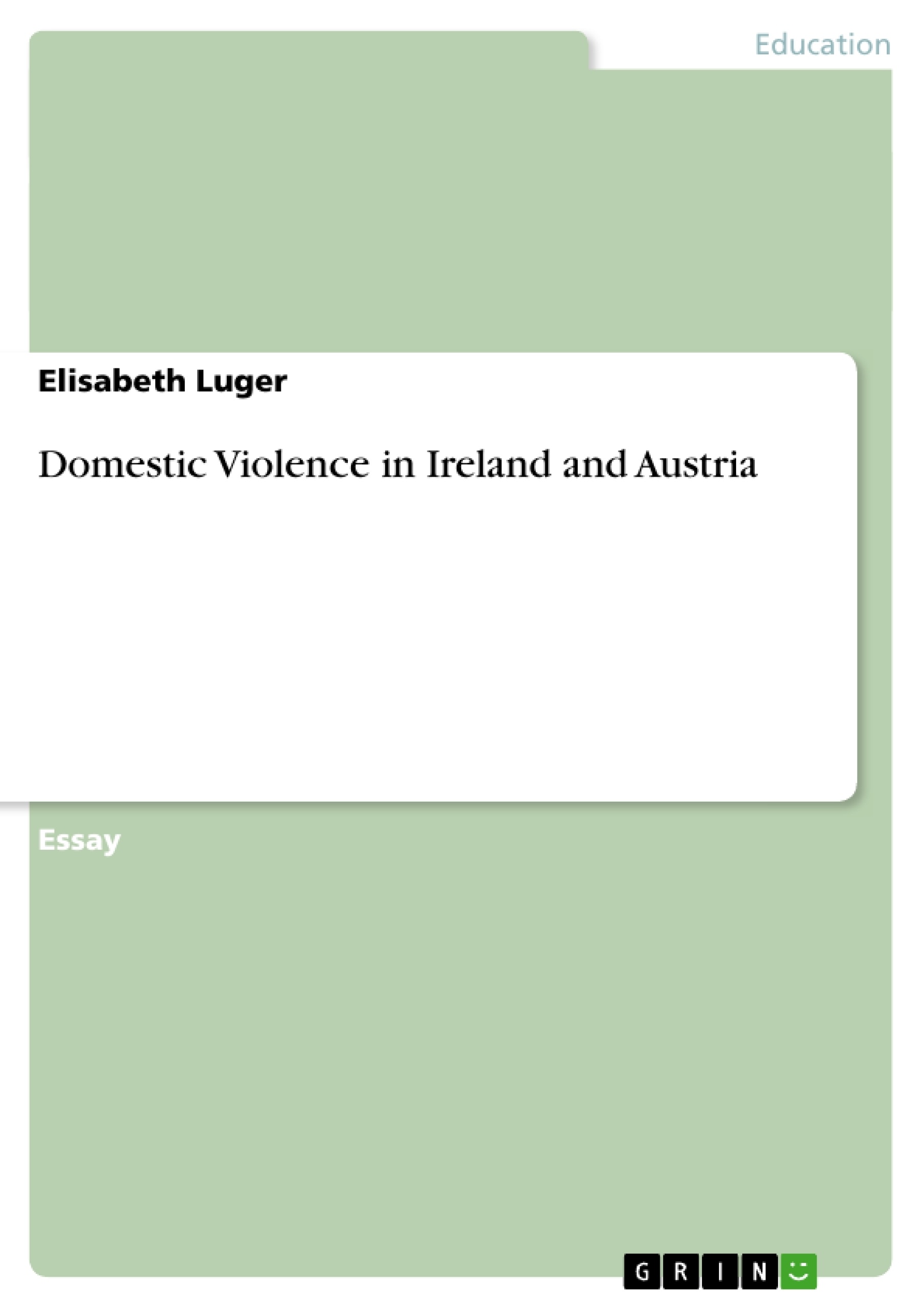Excerpt
Table of Contents
1. Abstract
2. Introduction
3. A Cultural-Led Definition and Possible Reasons for DV
3.1. Definition
3.2. A Typical Irish Family
3.3. Possible Reasons for DV
3.3.1. „Travellers“ – A cultural challenge for Irish Officials
4. Protections available against domestic violence in Irish law
4.1. Irish Legislation
4.2. Women’s Refuges
5. Conclusion
6. Bibliography
1. Abstract
This paper deals with the reasons for, and the present legal protection against, domestic violence (DV) in the Republic of Ireland (ROI). Firstly, the paper sets out a definition for DV in order to analyse the reasons for DV. Following this, the paper will list the different legal options a victim has. Similar to other European countries the ROI is in a rather early stage of developing suitable legal protection and therefore laws are still stationed in the amendment phase. Finally, the paper focuses on one of the women's refuges in the Dublin Area. To better relate to the Austrian reality, small boxes with comparable Austrian data have been added in-between each paragraph.
The following graph should give the reader an overview of the different sources of information dealt with in this topic.
illustration not visible in this excerpt
2. Introduction
As soon as I learnt that I had to write about a socio-political topic of my host country Ireland, I knew that I wanted to write about a taboo topic. I quickly realized that the conservative and catholic Irish society is the perfect breeding ground for such topics, such as abortion, gay-marriage, church scandals, etc. After trying to research the abortion topic, I gave up because it is still a big taboo topic. The fact that it is still forbidden and a lack of cooperation on the side of several public and private institutions led to me to an area that is being discussed a little more openly in public – domestic violence. Campaigns like the one on the cover sheet can be found quite often on public areas like busses and in the streets outside campus.
There is a recognised problem of DV in Ireland but unlike other forms of violence, DV happens behind closed doors and is still fairly common in Irish society.
Ring (1999, p. 31) gets to the core of the problem by citing an EU study. “According to EU research, 80% of Irish people think domestic violence is fairly common, compared to just 63% of Finns and 48% of Danes. […] One in five Irish women experience violence at some stage of their lives, a statistic that is common throughout the rest of Europe.”
3. A Cultural-Led Definition and Possible Reasons for DV
3.1. Definition
A broad definition of domestic violence should facilitate a clearer understanding of what the term ‘domestic violence,’ stands for. The legal definition of domestic violence is set out in the Domestic Violence Act of 1996, which defines it as “being violence perpetrated on a spouse and any children or other dependant persons, and of persons in other domestic relationships, whose safety or welfare is in jeopardy as a result of the conduct of another person in the domestic relationship concerned” (Shatter, 1997, p. 136). The National Women’s Council of Ireland (NWCI), which was founded as a state agency in 1973, sees DV as “a physical manifestation which is overwhelmingly committed by men upon women” (p.18). The NWCI also stresses the fact that children are always affected when it comes to violence in the home (p.16).
Although the incidence of domestic violence appears to be greater against females, one must also consider that males may be less likely to report abuse. Women’s Aid (2002) reported that in 2000 the percent of complaints of DV to the Gardaí was 84% female while men constituted the remaining 16% (p.15).
For an easy identification of domestic abuse, the latest DV-guide “Lean on Me” (ADAPT, 2001), sponsored by the Minister for State at the Department of Justice, Equality and Law Reform, poses questions concerning the partners. Some of them are:
Does your partner…
…control who you see and what you do?
…put you down and humiliate you?
…hit, slap or bite you?
illustration not visible in this excerpt
The box with the Austrian data shows that Austrian women define DV predominantly as being financial dependent on her husband in comparison to the Irish definition as being beaten and humiliated. The age group, 31 – 50 years, is most affected by DV in both countries.
3.2. A Typical Irish Family
In order to understand the reasons for DV it is vital to examine the nature of a typical Irish family and how family life changes over time.
I have noticed that it is common for children to live with their parents until they marry and that Irish families usually take care of elderly relatives. On one hand, the state provides pension support to the elderly, benefits for children and single-parent families, but on the other hand, people have to marry young to afford a reasonable standard of living in an ever growing economy. The market still does not supply the new demand for single-apartments, which makes it almost impossible for singles to own a house or even an apartment. The average price for a simple room in a shared house (4-6 people) is 400EURs plus (in the Dublin city centre). One has to pay for one’s own independence.
[...]
- Quote paper
- Elisabeth Luger (Author), 2005, Domestic Violence in Ireland and Austria, Munich, GRIN Verlag, https://www.grin.com/document/35870
Publish now - it's free






















Comments